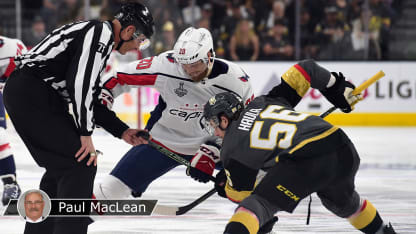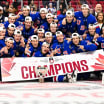The Coaches Room is a regular feature throughout the 2018 Stanley Cup Playoffs by one of four former NHL coaches and assistants who will turn his critical gaze to the game and explain it through the lens of a teacher. Jim Corsi, David Marcoux, Paul MacLean and Joe Mullen will take turns providing insight.
In this edition, MacLean, the former coach of the Ottawa Senators, breaks down the advantages of teams leading by one or two goals late in games continuously icing the puck, a tactic he commends. It's something to watch for in Game 3 of the Stanley Cup Final between the Vegas Golden Knights and Washington Capitals at Capital One Arena on Saturday (8 p.m. ET; NBCSN, CBC, SN, TVAS).
Capitals right to ice puck late against Golden Knights in Cup Final
MacLean says tactic shows confidence in winning face-offs heading into Game 3


















